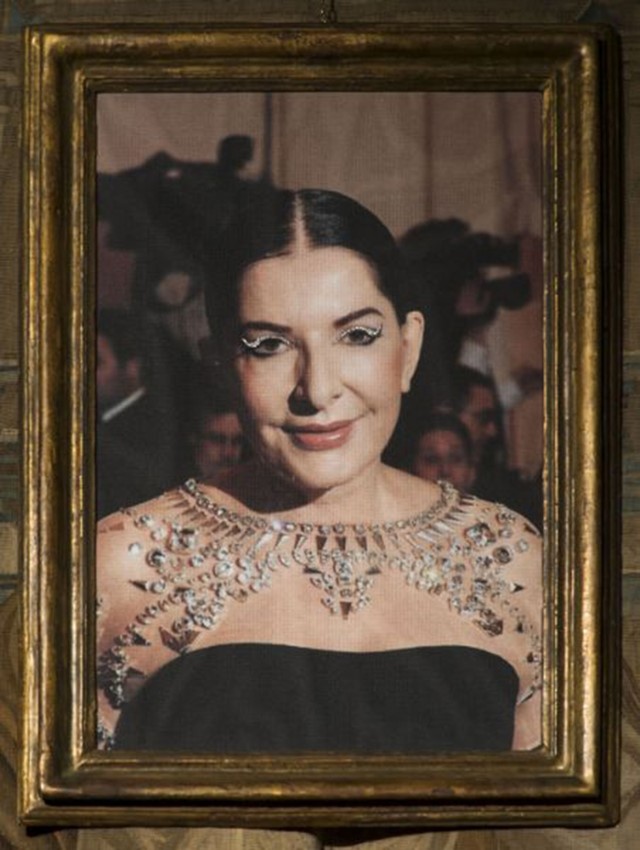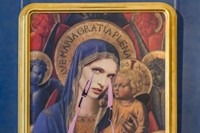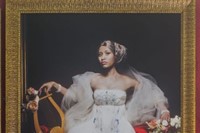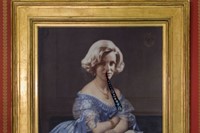We catch up with Francesco Vezzoli as his new retrospective opens between three small, intimate venues in Florence
Nicki Minaj portrayed as Madame de Pompadour, Sofia Loren lost in a De Chirico landscape, Richard Gere emerging from a Boticellian seashell… art history meets pop culture at Vezzoli Primavera Estate, Francesco Vezzoli’s latest exhibition in Florence. Divided between three small, intimate venues rarely open to the public – Museo Stefano Bardini, Museo di Casa Martelli and Museo Bellini – the retrospective features iconic works by the Brescia-born, CSM-educated artist camouflaged among hundreds of paintings and sculptures by the likes of Donatello, Verrochio or Filippo Lippi. AnOther caught up with Vezzoli to discuss Florence, Catholic art and pop culture icons.
Where did the idea for the exhibition come from?
This year marked the 60th anniversary of Firenze Hometown of Fashion, and the Pitti Immagine team invited me to participate, which for me was a real honor as I have always admired fashion… I quickly realised the exhibition shouldn’t be a celebration of myself but of Florence, and I had this idea that my pieces should be interwoven with the city. That’s how I came to choose the three different venues: they are like three secret treasure troves, and I thought it would be great to open them so that the public could see my work hanging from the walls next to masterpieces like Donatello’s Madonna Dei Cordai. The whole process was tremendously enjoyable.
"I wanted it to be a sort of game, a joke, but also a real art experience and that’s the kind of thing you can only do in Florence"
Do you have a special relationship with Florence?
I just love the city so much, and I find fascinating how such a little space can contain so much art, and so different. In Rome, most historical art is linked to the Church – or to aristocratic families with strong ties to the Church – through artists like Caravaggio. In Florence you have all that – the House of Medici’s influence is enormous – but there are also lots of private collections filled with exquisite artworks, like the one amassed by Bellini, a late 19th century antiques dealer.
The exhibition has a Where’s Waldo feeling to it… Why did you decide to camouflage your work among historical pieces?
I wanted it to be a sort of game, a joke, but also a real art experience. And that’s the kind of thing you can only do in Florence, far away from the seriousness of the Biennales and the bigger cities where most masterpieces are concentrated in institutional museums. So it was fun, but the process of moving the artwork hanging from the walls to make place for my pieces was also a very emotional one: I remember the current owner of Casa Bellini taking down a painting by Beato Angelico and inviting me to touch it to truly relate to it. It was such an incredible feeling.
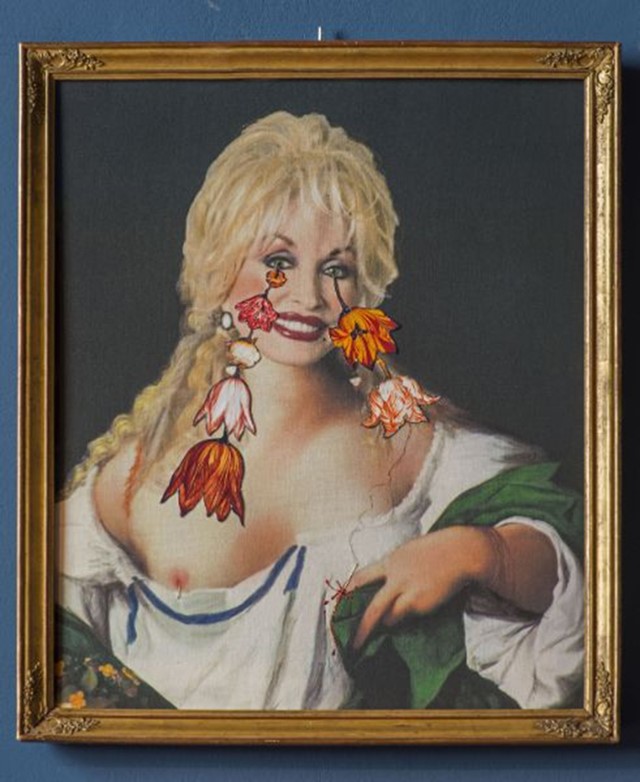
Were you worried that people might misunderstand your intentions in hanging your work next to Michelangelo’s?
I was a bit concerned that some people might think I am comparing myself to all those masters… when that’s the last thing on my mind. The goal of the exhibition is not to measure myself with the masterpieces or to be irreverent, but to express my love for historical art and iconography and play with those languages. I know it’s not everyone’s cup of tea though: in an exhibition in New York four years ago, I transformed the Gagosian gallery into a church where I hung paintings of Christie Brinkley and Claudia Schiffer looking like Madonnas. People didn’t like all those religious works… But I guess not everyone is as much into emotions, El Greco or Salvador Dali as I am.
Do we tend to over-intellectualise art?
We do over-sacralise it, and we do tend to lose touch with the past. Nowadays we have two different kinds of iconography: a noble one and a vulgar one. Before the 20th century, only one iconography existed. There was not an intellectual value to art but an emotional one, and most art was made for very private consumption (think of Fragonard’s provocative nudes), which I find extremely interesting.
Vezzoli Primavera Estate runs until July 20.
Text by Marta Represa
